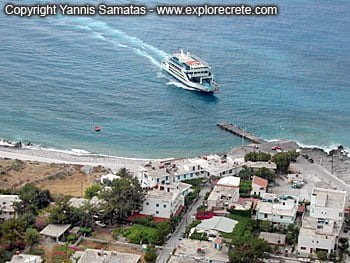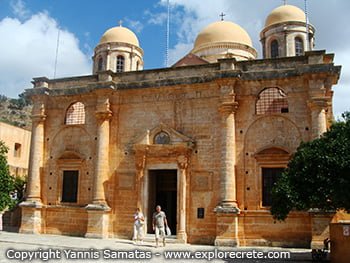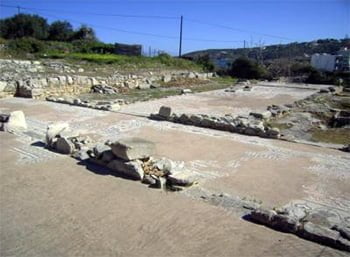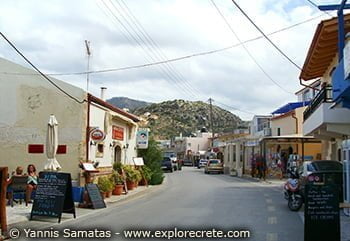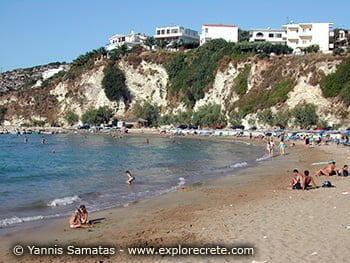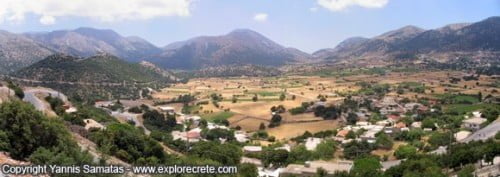Katholiko Monastery, Cave of St John the Hermit
Walking down the footpath from Gouverneto Monastery through the Avlaki Gorge, in a wild and beautiful landscape, you will see, in about 30 minutes’ walk, the ruined Katholiko Monastery (Moni Katholikou) or Monastery of St John the Hermit, or simply Katholiko.
Katholiko Monastery
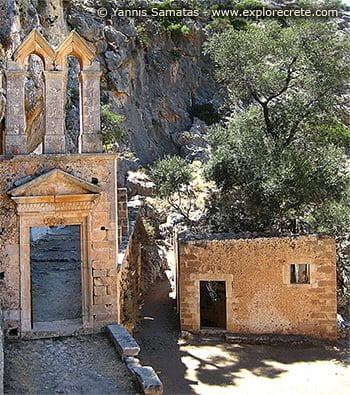
The buildings you see probably date to shortly after 1600, but tradition says that there was a much earlier monastery here, the oldest in Crete. Unfortunately this is not confirmed by historical sources, and the Venetian census of 1637 does not mention a monastery here, only the church of St John the Hermit which belonged to Gouverneto Monastery.
However, the importance of the name Katholiko should not be overlooked. A “katholiko” is the main church of a monastery, where the monks gather to pray each day. This name is strong evidence for the existence of an old monastery on the spot, even if all traces of it have now been lost.
It is also said that the monks abandoned Katholiko Monastery due to pirate raids and built a new monastery, Gouverneto. Researchers doubt this, given that Katholiko Monastery was dedicated to St John the Hermit, while Gouverneto Monastery is dedicated to the Virgin. This change would have been considered deeply disrespectful to the saint of the older monastery, so this information is considered doubtful.
The Cave of St John the Hermit
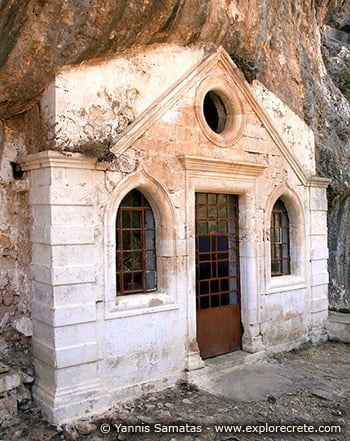
Next to the ruined but still impressive buildings is the cave of St John the Hermit, who is thought to have come here from Egypt and was active in many parts of Crete, such as Azogyre, before ending up at Akrotiri.
The Cave of St John, once the bed of an underground river, is over 100 metres long and covers an area of 1,500 sq.m. This was the retreat of St John the Hermit, who lived off wild greens in the winter and carobs in the summer. Legend has it that, near the end of his life, he was no longer strong enough to walk upright, due to his poor diet and the hardships of the ascetic life.
One day a distant hunter mistook him for an animal, as he was walking all crouched up, and injured him with his arrows.
The injured saint returned to his cave and breathed his last lying on a rock, now known as “St John’s bed”.
This rock is supposed to have healing properties and many people used to break bits off to take away with them.
If you follow the path for another ten minutes you will come to the sea, in a tiny, deep cove with aquamarine waters. It may once have been used as a harbour and has its own legend.
If you go down to the cove, don’t forget to look for the ship-shaped rock!
Bibliography: Monasteries and Hermitages of Crete – Nikos Psilakis
- Read more: Gouverneto Monastery
© explorecrete.com All Rights Reserved. Reproduction or copying without permission is prohibited.

